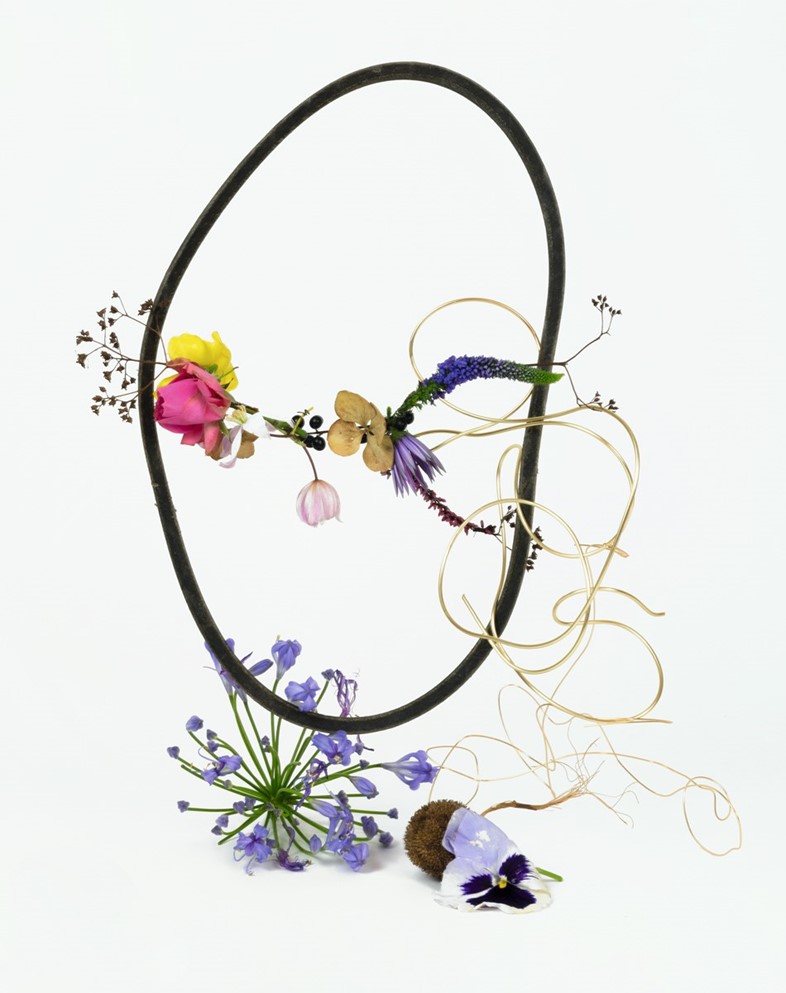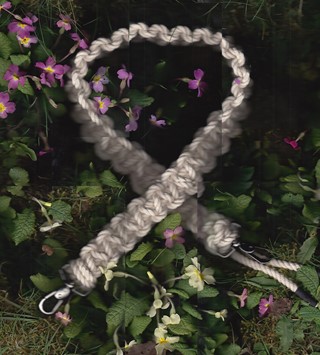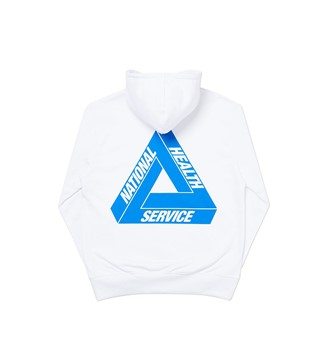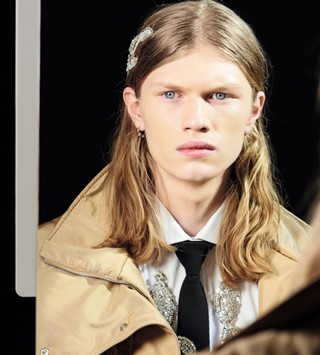The artist and photographer’s work is synonymous with flowers but, as he reveals, he actually has a very toxic relationship with them
- TextBen Perdue
A little-known fact about William Farr: he hated studying fashion at college, but did it to escape his hometown of Huddersfield, before finding work as a set designer to support his art practice. Like he says, “When you’re poor, you can’t just throw away a degree and ask mummy to pay for another one!” Here, alongside his photography and artwork for the Spring/Summer 2019 issue of Another Man, the multidisciplinary artist tells us about working from his kitchen table, how he conjures beauty from other people’s rubbish, and his toxic relationship with flowers.
“Huddersfield is a post-industrial town, so I grew up playing in derelict mills and half-demolished buildings. Decay was very present and had a huge influence on me. And Yorkshire has loads of countryside, which I’ve brought into a city context through my work. I’ve lived in London for so long I feel more of a Londoner now though, and I almost never go back.
“The first series of images I took in the body of work I’m making now got a really good response, even though I just went and collected some flowers, sat at my kitchen table and shot them on an iPhone. But what people don’t often understand is that it’s as much about the image as what’s inside it. They can’t imagine it as a multidisciplinary thing. They want you to be a photographer, or an installation artist. I don’t see myself as either. Photography is part of my practice, but I’m not a photographer. That kind of narrative just leads to people categorising you.
“I work a lot in my kitchen, actually. It’s funny, I really like working in domestic environments because it’s comfortable, and I can make myself a cup of tea. I want to work more outdoors, but I need to get my driving licence first.
“We constantly fight against things being temporary by making products that are supposed to be permanent. Art used to be this ego trip about making your mark, but I think that what’s more relevant is art that talks to just this moment. I only make temporary things, because we are temporary. And it’s really important for me to change the way we place value on materials. Why is one object valuable and another not? And why does our art not reflect that? I’ll steal flowers from a garden, put them in a picture, and people see beauty and it creates value from nothing.

“Scavenging is a big part of my process, because it came from being poor and needing to find a way to make work out of anything at hand. All artists need a starting point, and for some people that means pencils and a piece of paper, but that wasn’t the thing for me. I like chaos; controlled chaos.
“I have assistants come in with a bag of rubbish, get them to empty it on the floor, and I can see straight away what I love. When you begin to see like that the world opens up. It manifests in all kinds of weird ways in my life, like how I treat objects, and in the objects that I decide keep. I’m very clinical now. Some people expect me to be this kind of hoarder, collecting loads of stuff, but I don’t. I don’t keep anything. I don’t put value on anything, so it doesn’t matter to me. The value is in my work, everything else is secondary, so I don’t really need stuff. It’s really transient.
“People think that flowers are a really important part of my work, and I guess in a way they are, yet at the same time I hate flowers and want to get away from them. They’re not integral, and a lot of my pictures don’t even have flowers in. But my college sketchbooks were full of them. And every time I say I’m not doing them anymore, a few weeks later the house will be full of flowers again! The fortunate thing is that people see art, not floristry. So, my distain for flowers must show through on some level.”
A version of this article appeared in the S/S19 issue of Another Man.















